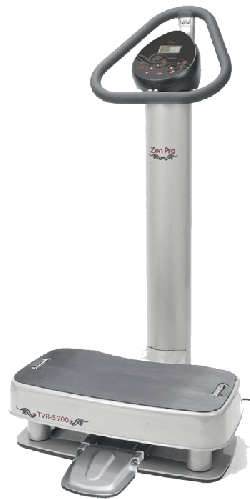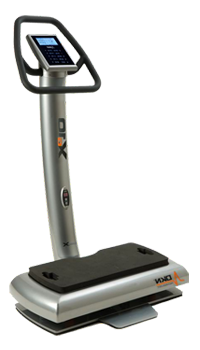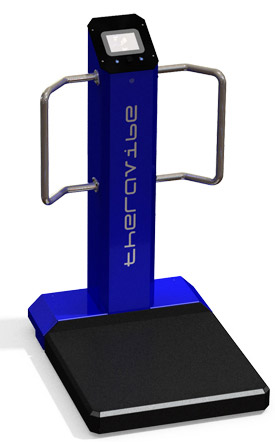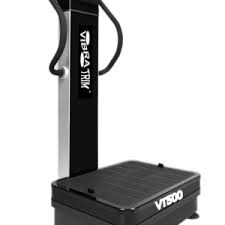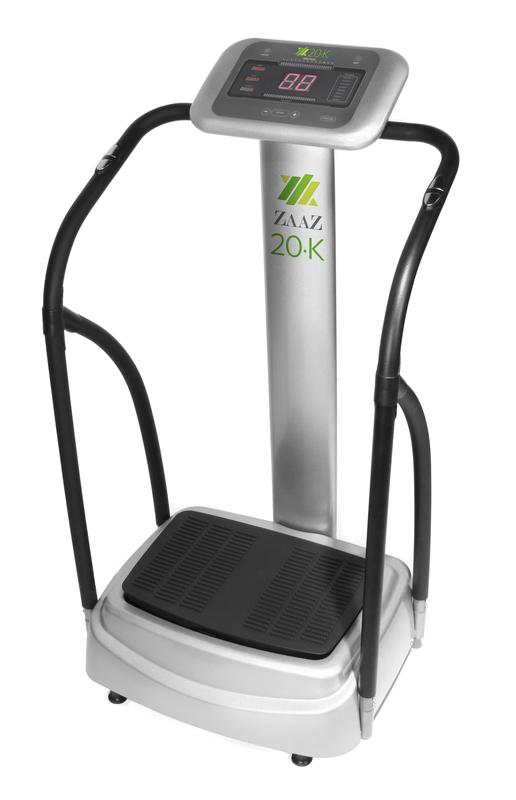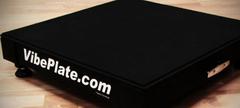Comparison Charts
If you read why upset customers return machines this will give you an idea of why I don't sell certain machines even though people ask me if I can get them. Click here to know if you bought the wrong machine.
Feature
Powervibe
Zen Pro
Noblerex
Sonic LIfe
Gyminator
Vibra-Trim
VT400
Turbo
Sonic X7
Wave
Exercise
PowerVibe
Motion 1
DKN
Xg10
Power
Step
Theravibe
Plate LENGTH
29.5"' wide
23' wide
27.5 x 32
22" x 14'
27' wide
35.5 x 39.4
23.5 x 15
22' wide
27.5 wide
depends on model
29" x 26"
Usage
no
yes
no
no
commercial
"home fitness"
residential
commercial
residential
Continuous
commercial
Pivotal
light commecial
commercial
yes
no
no
yes
no
yes
no
Linear
yes
no
yes
yes
no
yes
yes
yes
yes
no
yes
Sonic
no
no
yes
no
no
yes
no
no
no
no
yes
Spiral
no
no
no
no
yes
no
no
no
no
no
no
G Force
push or pop
smooth
pop
smooth
pop
push
smooth
pop
push
push
smooth
pop
pop
pop
pop
push
Frame
steel no tin
steel
steel
steel no tin
steel
steel
plastic and steel
steel
steel
depends on model
steel
Made In
China
unconfirmed
Korea
California
China
Korea
Canada
China
Taiwan
China
California
US Service Centers
Teas
yes
yes
California
Seatle
yes
Canada
Texas
yes
yes
California
Floor Vibration
low w/ pad
low
low
low w/ pad
very low
very low
low w/ pad
low
low w/ pad
low
very low
Sound PItch
low
low
very low
medium
very low
very low
low
low
low
low
very low
Money back trial
yes
yes
yes
90 days
30 days
ask
ask
yes
ask
ask
yes
Amplitude
1.5mm
1 to 14
Depends on weight & Hz
6mm
1 to 10
Depends on weight & Hz
hi/low
10mm
3.9mm MAX
1 to 10
1mm
AC or DC
DC
AC
AC
DC
AC
DC
DC
DC
AC
AC w/
DC offset
Restocking fee
yes
no
ask
no
no
ask
ask
no
ask
ask
ask
G- Force
passed
passed
passed
passed
passed
passed
passed
passed
passed
passed
passed
Gauge of Plate
heavy duty
adequate
heavy duty
8 Gauge
steel
heavy duty
heavy duty
heavy duty
adequate
heavy duty
adequate
heaviest
duty
Hz Range
20 to 50
not rated
3 to 50
20 to 60
5 to 14
3 to 25
25 to 50
up to 50
6 to 14
20 to 50
not rated
3 to 80
Tippy Edge
great
perfect
good
perfect
perfect
great
great
good
great
good
perfect
HP
1.5 HP
2 HP
n/a
2 HP
2 HP
n/a
unknown
1.5 HP
1.5 HP
1.5 HP
1.5 MAX
Wattage
500W
150W
500W
250W
500W and 300W
500W and
300W
unknown
500W
500W
300W
1100W
Height from ground floor
low
low
low
very low
low
low
low
low
low
low
ultra low
3.5 Inches
EMF
negligable
low
low with
sticker
negligable
negligable
low with sticker
negligable
negligable
negligable
low w/ sticker
negligable
3 layers steel
DC
light commecial
light commecial
light commecial
based on users under 221 lbs.
I am sick of every company saying they have the best one that I had to build this site. I will not sell machines that I do not approve of. I will give honest advice and reasons for my recommendations based on my research.
Know before buying
Helpful Information
I made this chart so people could pick out the right machine based on their weight and usage.
Many people just look at horsepower and see 1.5 horsepower without knowing the amperage. You can have a 200 watt, 300 watt, and 500 watt motor and they can all be 1.5 horsepower. It is very easy to buy the wrong size motor.
Out of respect for companies that I did not approve of I have chosen not to put up a bad review.
I refuse to bad mouth companies that have no grasp for the technology need for certain types of sessions (lymphatic, bone building, or vasodilation) and for those companies that think their machine does it but really it won't. The worse part is that the sales people they hire actually believe what they are told to say to customers on the phone and have no done research, have not tried out the different machines and watched people from overweight people to people with low bone density to those that have bad backs.
I am always updating the chart as new machines come out and keep it current.
A note on the use of my vibration machine specifications for comparison:
Before relying entirely on a comparison of what you see on my website, just know that reading the specs on my "comparison chart page" isn't there to show how good it works. Standing on them gives the most reliable comparison.Each type serves a different purpose. NOTE: Be careful not to compare models of different types. A 500 watt linear motor is not the same as a 500 watt oscillation motor.
If you to see if there is a certain machine in your area, make contact, and I will try to see if there is a chiropractor in your area that has that machine.
G force - A machine can have double the amplitude and half the speed or half the amplitude and double the speed. You cannot rely on just either variable alone. A 3 G force at high speed and low amplitude feels totally different than the same G force at 5 hertz and high amplitude standing on the tippy edge.
HP - This can mean input HP or output horsepower to the plate. 746 watts is one input horsepower so keep that in mind. If a machine is only 200 input watts, it has less than half the power of a 500 watt input motor. Generally, the larger the horsepower rating the better. Also keep in mind that a 2 HP DC motor has a different torque and amperage input than at 2HP AC motor. DC motors are less noisy and create less drag if a brushless DC motor.
Wattage - A 500 watt motor is generally the most power you need to use a vibration machine unless you are adding weights way over 300 pounds. A 500 watt DC motor will usually have more power than an AC motor due to torque capacity. If someone is under 160 pounds, generally a 300 watt motor is sufficient. A 200 watt motor will provide less G force the heavier the person is. If you are over 200 pounds, I would not suggest any motor less than 500 watts.
Height from ground floor - The lower the better. The more grounded the machine is the more stable it will feel. Some of the plastic models might feel stable because they are low a the ground but because they lack more G force. On higher plates from the floor, I would not suggest walking off if working out with someone and switching back and forth without turning off the machine. These types will walk across the floor and end up on the other side of the room if the cord is long enough. Solid steel and lower to the ground gives the best sturdiness and "roots" the machine to the floor.
EMF - Just Google EMF and you will see how bad EMF is for you. If you think a hairdryer or your cell phone has a lot of EMF, I would get an EMF meter if you buy an AC motor. Unless you put the stickers all over the frame near the motor or have an insulated frame, the EMF can be quite high on AC models. You can take battery testers from Radio Shack and pinch the red wire with one hand and black wire with the other hand and you can see how EMF lowers the body voltage. When we get tired, our voltage goes lower. High energy people have a higher voltage than lower energy people. Get one of these AMP meters for 15 dollars and try it on people and you will see what we experienced when people just stand "next" to machines that have an AC motor that give off high EMF. A lower wattage machine that has to work harder to do the same job as a larger motor, if AC, will usually produce more EMF. Be careful. I mean that.
Tippy Edge - To see if the motor is powerful enough stand on the tippy edge at the lowest frequency setting where it's working with very little momentum and peak motor horsepower. Some cheaper motors bottom out if you are a certain weight and others will just move you with very little G force. Typically, the longest plate (27 inches is the longest plate that is not too big that it inverts your ankles) will give the highest amplitude and G force. You can have high amplitude on a shorter plate that tilts more but that is not the same. A tippy edge going up to 10 amplitude that is 22 inches might go to the same height as a 27 inch tippy edge but although they both go to the same height, there is a difference in feel. See Pop vs Push.
Hz Range - Some plates start out at 7 to 10 hertz (mostly pivotal). Some start at 25 hertz (mostly linear), Some start even lower. The more expensive the machine is the lower the starting hertz as it works on motor power instead of momentum when the plate is moving fast. The cheapest oscillating machines will usually have a hertz range that starts out high, usually around 10 to 20 hertz. Linear machines usually start out at a higher hertz which is different than the same hertz on a pivotal model, where the hips cancel each other out and remove most of the impact before it reaches the back. Most people with bad backs prefer the pivotal and spiral models while athletes and those that "already" have a healthy back and knees prefer the linear.
Gauge of Plate - The heavier gauge the plate is the more solid the plate feels, especially when vibrating at high frequencies. On some cheap plates, instead of just feeling the amplitude and G force, the plate vibrates itself and is not the most comfortable vibration. If you have ticklish feet, you probably are going to find a thicker plate that doesn't vibrate itself so much a better plate for you that is more comfortable to stand on.
Restocking fee - What really amazes me is that companies who offer no restocking fees and that will also pay the shipping back to them is all great but what bothers me most is that these are the companies who inflate their prices. Most of the brands that are willing to pay over 100 dollars to ship it and over 100 dollars back and then have to sell the machine at a used price would not do that if they were working on a low margin. There are a few companies that rarely get machines returned and they offer no restocking because they simply have you ship it to the next person and the person that ends up with it pays the final shipping price. Someone will pay the shipping costs, it is the person that ends up with the machine because their prices are so jacked up. If I wanted to charge 200 dollars more for each machine I would offer a "no restocking fee" also. The customers are the one who pay in the end and it is similar to the machines that have a 2 year warranty from the manufacturer and then some dealer gives a 5 year warranty and charges double. My website exposes this also.
AC or DC - DC motors run on less electricity to do the same job. AC motors are cheaper to build and create RF frequencies which can be counteracted with stickers that block them. The machines with DC motors are usually more expensive than models with ac motors. Dc motors create more torque, especially with heavier weight on the plate. Ac motors might be cheaper up front but can cost you more in the long run. You can get a machine with an AC motor very cheap on the auction sites. You will rarely see a DC model sold for what the AC models sell for. It's ok to buy an AC motor if you know its limitations and have protection against EMF.
Amplitude - Just having high amplitude means nothing if the frequencies are not aligned. Some machines, can go to high amplitudes but start out at high frequencies. Others can go down to 3 to 5 hertz and still get the same amplitude. I always wanna make sure that I get enough amplitude that gives my body enough time for the one way valves in my lymphatic system to open and close. Even if some are going at 5 hertz per second and there is not enough time elapse for the one way valves to pump from the negative pressure created when you vibrate at the right speed, no results happen and this is why many people return their machine. The longer the plate, the higher the amplitude is and the plate can vibrate slower when amplitude higher in comparison to plate speed on a pivotal or spiral machine. Linear machines are totally different and you can't compare amplitudes and frequencies with those because the amplitude is different when it lifts your whole body rather than canceling each hip out with a pivotal or spiral type. If you tried to increase the amplitude on a linear machine to 10 mm at 5 vibrations a second, it would probably break your back but very gentle on a pivotal, so you can get the results by taking out the ballistic impact before the it gets to your back. Remember, most of the lymph vessels are in our legs and although the entire body is not going vertical, the legs are enough to create the hydraulic pump in most people to give the results.
Money back trial - I want to say one thing first, GET THIS IN WRITING. There is always something that gets @#%ed up when people try to return them at the end of the trial period. I am the one who hears all the stories on why they wouldn't let them return it. Maybe it was used in a gym and was overused, maybe they used it for more than 10 minute sessions and it voided the return. There always seems to be an issue when the customer wants to return it. It is usually the knock off companies that private label these cheap imports that are all plastic and low wattage (200 watts ones get the most returns based on the customers that call me and complain). When people buy a 400 dollar machine on some auction site, sure, they can return it..... it will just cost 125 dollars to return it and the 125 dollars it cost them to ship it to you. Heck, thats 250 you gotta pay. You could sell the dang machine on back on eBay and get more. Do you see any used models on eBay ever? Do you call them and ask for any return models. NO, YOU DON'T. Why would they want you to think people return them if it's such a good product. These cost them a fraction of what they sell them for and I have heard they usually just toss them in the garbage if something was wrong with it because they are so cheap to make. They make you pay the 250 to return it just to send you 150 dollars back. Most people would rather keep their 400 dollar machine for 150 bucks. I would never buy a machine that didn't have a money back trial and they put it in writing on who pays shipping back, etc. Please, make sure you know what you are getting into before signing unless you are guaranteed. If you ever went to Whole Foods, if you don't like something, they let you return it and give you a full refund. This doesn't happen like this with small little health food stores. You break it, you buy it!
Sound Pitch - Many people want to watch TV or listen to music without their machine sounding like an airplane engine taking off on the runway. Some are so loud (mostly AC and non-brushless DC motors) that you can't use it in the house when people are sleeping. Brushless DC motors are the quietest but more expensive as they create less drag and create less friction because nothing is rubbing. If using it in an office or gym, it is annoying to others to hear a loud machine. The very cheap AC motors are often the noisiest unless it is in a thick gauge steel frame. Plastic models are the worst at sound proofing. In an office, a solid steel machine should be mandatory.
Floor Vibration - Now if you live on the second floor or you have neighbors that will beat on your wall if you are making too much noise, even if you have a silent motor, on some models they vibrate the floor more. Linear types vibrate the floor the most. If you are worried about the floors and walls vibrating or even your doorknob rattling which is very annoying, a pivotal or spiral model with a mat under it will often do the trick. The heavier the machine the less that its weight comes of the ground. Any machine under 100 pounds will usually rattle your floor.
US Service Centers - This is something that many people do not know about. You can find the same machine, same model sold in the USA for 4500 and in other countries it is 1300 dollars for the same exact machine.
If you don't care about warranty and just want to get the machine, are the you the that wants the 4500 dollar machine but will pay 1300 knowing that if it breaks you have to send it back to Siberia to get it serviced. It is the same machine, just the instructions and menu and warranty is all written in Korean or Chinese and no US service center will honor the warranty. Many of my customers will choose to buy the machine they want with a Canadian warranty or if they live in Canada, a USA warranty. If you want a better price on a machine and don't want a warranty card let me know. Don't people realize that the manufacture figures into the price that some people abuse their machine and they have to figure in replacement fees, and also about 125 dollars in case they have to get it shipped back when they have a free shipping back return policy. It sounds like its free but its all built into the price. Let me know if you want the warranty or not when you take my quiz. It really does affect your price.
Made in - When it comes to vibration machines, almost all the major brands are made out of China. China seems to be the market leader in technology with these machines. There are many things that I wouldn't buy from other countries but they do come out with the latest technology. What is good is that they let the importer decide on which type of quality of motor and components to build them with. The importer decides weather to put an AC or brushless DC motor in their models. There are a few companies that build their machines in California. What is funny is that the Chinese people that call me don't want to buy the ones coming from the US. Because the prices are affordable for the ones in other countries, people are able to use these machines and not pay 12,000 like they costed us when they first came out. The 2000 dollar spiral type machines that are out now would probably have costed about 15,000 about 10 years ago.
Frame - Not everyone needs a 100% steel frame. If someone is under 160 pounds, the extra weight of a heavier frame won't be as noticeable. But if a person is closer to 200 pounds, this is when it is more noticeable. Sturdier frames definitely feel more rooted to the ground but for those that cannot afford a steel molded frame, they also come in a steel/plastic combo. This is still a little more sturdy than an all plastic model. The least sturdy of the frames are the ones without the post and just have the platform but this all depends on the amplitude. If the machine is only going up to 2mm then it is not usually high enough to matter. Most people prefer a steel frame for a more solid feel and to soundproof the motor noise.
Push or Pop A push is like a baseball being thrown by a pitcher. A pop is like a baseball being hit by a bat. Both balls can be sent flying at 50 miles per hour but the forces that did it are totally different. Depending on if you have a bad back or bad knees you will prefer one type of fore over the other. If you are trying to pump lymphatic fluid and create a milking motion so the one way valves can create a negative pressure to pull the waste out of the body, you will also notice a difference between the type of force. Also, when you start becoming really itchy you will know if it is a push or a pop. The type that moves more blood circulation than your body can handle can make you feel very itchy. Slow it down! Some machines have shorter plates and you have to jack up the power to get enough G force. Many people get that itchy feeling and goes away after the body becomes more in homeostasis.
Note: A 22 inch plate giving 10 mm amplitude and a 27 inch plate giving 10mm amplitude can both give the same 3G forces. A 22 inch plate, in order to reach the 10 mm, will either have to vibrate a little faster or the plate will have to tilt more. A shorter plate will have a different feel than a longer plate. If you plan on using your machine every day, too much of a pop creates too much ballistic impact. If you plan on using the machine on a daily basis a plate that has some of a pop but more of a push will be more gentle on your bones and joints, especially if you have a bad back or weak knees. If you ever jumped on a diving board into a swimming pool, notice how if you stand right near the edge it pushes you up but if you stand further away from the edge, its more stiff and more jarring to jump. Read more about push/pop here. I go into more detail.
Spiral - This combines linear with oscillating (side to side). These have two motors that move the plate differently. It goes side to side and the 2nd motor makes it dip front to back. Having the 2nd motor helps work more muscles than just a single motor. It creates a more smooth elliptical motion when is much smoother than the older teeter totter types. There is one main company that has the patent on the spiral technology and many of them look alike. Beware, the frame can look identical BECAUSE THEY ARE IDENTICAL. The differences between them are that the importer can choose the type of motor they want, the wattage, and the quality grade of motor (some are quieter than others and are brushless). There are some companies that charge more because they inflate their prices and others charge more because they have chosen to put better motors in theirs. Their are only 4 spiral models on the market that I have found. If the specs on a brand seem much different than other dealers, be cautious. I have seen one company saying they have a 1,000 watt motor and we found it only had a 500 watt motor. Spiral types are now the most popular vibration type since they came out.
Linear - A linear platform moves straight up and down. If you are mainly focused on working out, building bone density, or lymphatic movement (if it has a high enough amplitude, more than a few millimeters) these are the ones that most people prefer. If you have a bad back, you have to bend your knees more than the models that pivot and cancel each hip out. The best advice I have is that if you can jump rope without your back hurting when you jump then you should be fine with a linear (vertical) type vibration. People almost always prefer linear over pivotal or pivotal over linear. My quiz pretty much will let me know which type based on the questions I ask will be the one you will most likely prefer. For building bone density and hard core workouts, you can't get better than linear vibration. If you are trying to lose weight or have a lot of swelling in the body you want to get rid of, I would recommend the pivotal or spiral type as it can lift each leg up to 10 mm while if a vertical plate went that high it would not be good. Know that most of the lymphatic vessels are in the legs which with the pivotal type, is usually enough to create the hydraulic pump to push the circulate the lymph to eventually dump into the liver and help flush the body of all the trapped blood proteins and blood poisons that get eliminated. Choosing linear over pivotal is a very personal decision. Do not let someone tell you which one to buy. Know the difference and it is easy to choose.
Pivotal - The first technology that came out from the start. This is the standard see saw type vibration that when the plate tilts back and forth resembles a person walking on uneven ground as you would normally get the same G forces depending on how fast you walked. The best ones operate at 5 to 6 hertz that resemble a brisk walk on uneven ground. You can buy a cheap model that starts at 10 hertz or faster. You miss all the G forces with enough time elapse to create the negative pressure in the lymphatic vessels. Faster pivotal models are great for helping with bone mass and toning up the body. But, you can get a model under 1000 dollars if you just want that. Many people use the pivotal type at their chiropractors office and then decide to buy one for their home. Many people make the wrong decision and buy a cheap one and then it doesn't work like the one in the office. The main difference between pivotal and linear vibration is that with linear vibration, you get higher frequencies at lower amplitudes but with pivotal you get super high amplitude at the lower frequencies which is better for those wanting to flush out wastes.
The best rule of thumb - If it starts out above 5 to 6 hertz you might want to know the differences that that each additional hertz above 5 hertz limits the ability to create the negative pressure in the lymph system.
Usage - This usually means commercial or residential usage. The more commercial the motor is in the machine the more it can handle longer usages. A 2 HP motor is better for consecutive usages (two people using the machine back to back) because the motor doesn't get as warm as the lower powered ones that have to work harder to do the same job. For clinical usage, I would not use anything less than 2 HP. DC motors create less friction which keep the copper windings in the motor cooler if many people are using it. DC motors are usually longer lasting and more expensive but the longevity of the motor usually outweighs the costs. I have not had a single DC motor burn out. Not even once. Knowing how many people will be using your machine per day and how long between sessions is very important. The better the motor, the less time you have to wait to run the machine for the next person. A machine that can handle two sessions consecutively should be the minimum when getting decent usage.
Plate Length - After choosing the type of motor, plate length is the 2nd most important. A shorter plate will have to vibrate faster to give the same G force as a longer plate moving slower. At 27 inches, the plate has to move much slower to give the same G force as a plate that is only 22 inches, for example. It can be misleading when a model says it will go to 12 G's but doesn't say that you have to turn it up to 50 hertz to get it. A longer plate can get to 50 Gs at maybe 35 hertz, which is much easier on the back and joints. If you are on a linear plate, most people prefer a higher amplitude and the models that are designed to have a higher G force. Each additional two inches you stand apart on a pivotal plate exponentially increases the G force.
My chart (and website) is for my record keeping purposes only. it is not meant to be factual. Think if it like I bought these machines and did a research report for my college final exam. Just like the teacher could easily give me an F on my work, you, the reader, can decide if you like my work. I already know I can't spell and don't have a spell checker on this website builder.
Feature
HyperVibe
Performance
Vmax Trio
Pro Duo
T-Zone V-15
VMax Q5
VibaCore
3000
VibaCore
5000
VibaCore 1000
VMax
Q2
2013
VT-400
Plate LENGTH
27" wide
25.6" wide
21" wide
20.5" wide
39.4 inch
22' wide
16.5x22.25
27' wide
27' wide
Usage
yes
yes
yes
no
light commercial
light commercial
residential
residential
light commercial
Commercial
Pivotal
light commecial
light commercial
yes
no
no
yes
no
yes
yes
Linear
no
no
no
yes
no
no
no
yes
yes
no
no
Sonic
no
no
no
no
no
no
no
no
no
no
no
Spiral
no
yes
yes
no
yes
no
no
no
no
yes
yes
G Force
push or pop
pop and push
push
push
high push
push
tri-planer
tri-planer
pop
pop
push
push
Frame
Steel/fiberglass
thick steel
Thick steel
steel/plastic
Cast Iron
Cast Iron
steel
steel
Steel
Made In
China
China
China
ask
China
China
China
China
China
China
China
US Service Centers
yes
no
no
ask
no
yes
yes
Texas
yes
Seatle
Floor Vibration
low
low
low w/ pad
low
low w/ pad
very low
very low
low w/ pad
medium
very low
Sound PItch
medium
low
low
medium
medium
low
low
low
low
very low
Money back trial
30 days
30 days
30 days
ask
30 days
30 days
30 days
yes
ask
30 days
30 days
Amplitude
1 to 11mm
1 to 10mm
1 to 10mm
10mm
1 to 10
10mm
1 to2mm
3 to 5mm
1 to 10
1 to 10mm
AC or DC
AC
DC
DC
AC
AC
AC
DC
AC
DC
Restocking fee
yes
yes
no
ask
yes
no
no
no
no
no
ask
G- Force
super high
passed
lower
factor in person's weight
passed
passed
passed
Lower
lower
very high
very high
Gauge of Plate
heavy duty
heavy duty
adequate
heavy duty
adequate
Ultra Heavy duty
Ultra Heavy Duty
adequate
light
heavy duty
Hz Range
6 to 28
5 to 14
5 to 14
5.9 to 23.6
5 to 14
20 to 60
20 to 50
6 to 14
5 to 42
5 to 14
5 to 14
Tippy Edge
great
perfect
good
perfect
good
great
perfect
good
good
perfect
HP
2 HP
2 HP
2 HP
2 HP
1.5 HP
Ask
1.5 HP
1.5 HP
2HP
Wattage
900W
440W
350W
350W
500W
80W
Height from ground floor
higher
low
low
low
low
very low
very low
low
low
low
EMF
very low
low
very low
not yet measured
low
very low
very low
negligable
low
negligable
AC
light commecial
residential
residential
based on users under 221 lbs.
Forever Fit 2-N-1
500W and 300W
300W and 200W
plastic and steel
300W and 200W
heavy duty
DC
very low
very low
yes
steel
perfect
negligable
low
1000w and 500w
2.5 HP
21.5" wide
29.5 inch
Ask
500W and 300W
Again, because some companies don't like my chart. This is not factual. It is only the way we felt about the machines. It might sound loud to us but another person might think it sounds soft. Based on my weight I might think it has a push feel while others at different body weights might feel it as a pop. This is a very subjective chart and is meant for my eyes only. I don't mind sharing my charts. If someone doesn't agree with my charts, it's cool. I am not here to try to convince anything or prove a machine is one way or another.
Click here to read my latest vibration review
- PowerVibe - VMaxFitness - DKN - Turbo Sonic - VIBEPLATE - TheraVibe - HyperGravity - VibraTrim - FitVibe - WAVE - HYPERVIBE - ZAAZ - VIVOVIBE
LymphaticVibration.com
We're Open Now
1-888-439-8986
Ask for Sharon
1-888-439-8986
We're Open Now
Ask for Jake




